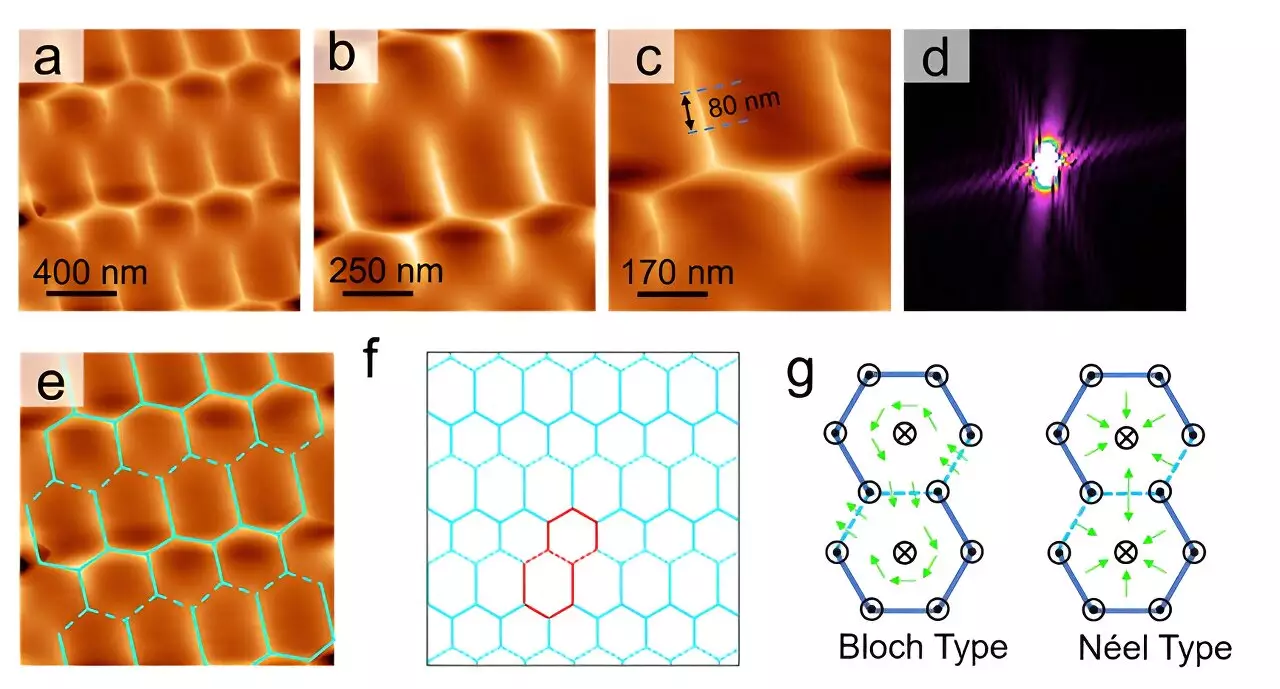In a groundbreaking study, a collaborative research group from China has successfully observed intrinsic magnetic structures in a kagome lattice, marking a significant milestone in material science. This achievement stemmed from the innovative methods employed by the team, which included highly sensitive magnetic force microscopy (MFM) systems and parallel techniques such as electron paramagnetic resonance spectroscopy and micromagnetic simulations. The findings were shared in the journal *Advanced Science* on August 19, shedding light on concepts that have substantial implications in modern physics and potential technological advancements.
Kagome lattices, noted for their distinctive arrangements, encompass critical phenomena such as Dirac points and flat bands, which play essential roles in topological magnetism and superconductivity. The study of such lattices is crucial not only for theoretical understanding but also for practical applications in fields such as quantum computing and high-temperature superconductivity. Despite their potential, the intrinsic behavior of spin configurations within these structures has remained elusive, making this research particularly significant.
Under the guidance of Prof. Lu Qingyou from the Hefei Institutes of Physical Science and in collaboration with Prof. Xiong Yimin of Anhui University, the research team investigated the binary kagome Fe3Sn2 single crystal. They discovered a novel lattice-modulated magnetic arrangement that uniquely reflects the broken hexagonal structure influenced by the interplay between the symmetry of the lattice and uniaxial magnetic anisotropy. This intricate interplay led to the existence of topologically broken spin configurations, confirmed through Hall transport measurements—an essential aspect of understanding how materials interact at the quantum level.
One of the more extraordinary findings was the revelation concerning the magnetic properties of the Fe3Sn2 single crystal. The researchers conducted variable-temperature experiments that indicated the magnetic transition occurs via a second-order or a weak first-order phase transition, challenging previous beliefs that such transitions were first-order. This insight not only redefined the magnetic ground state of the material as an in-plane ferromagnetic state but also overturned the five decades of premise that postulated a spin-glass state in the structure.
Building on their discoveries, the team proposed a new magnetic phase diagram for the Fe3Sn2 compound, offering a framework for further exploration of its properties. Notably, quantitative MFM data illustrated that a significant portion of out-of-plane magnetic components remains intact at lower temperatures, enhancing the understanding of magnetic behavior in complex materials. By applying the Kane-Mele model, the team elucidated the emergence of the Dirac gap at low temperatures and effectively debunked prior theories regarding skyrmion presence in Fe3Sn2.
This research not only enhances the understanding of topological magnetic structures but also opens avenues for future innovations in quantum computing and high-temperature superconductivity. The insights gained from understanding the kagome lattice illustrate the depth and intricacies of material behavior at atomic and subatomic levels, presenting valuable directions for subsequent investigations aimed at harnessing these phenomena for technological advancements.


Leave a Reply